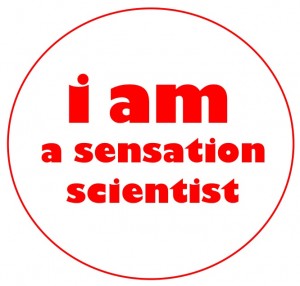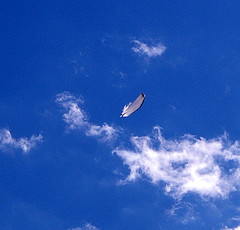My journey of remembering that I am a sensation scientist began in the spring of 1995, when, by chance, I walked into my first Nia class in a fitness club in Portland, Oregon, and my life changed forever.
At the time, I was totally disabled by asthma. I was a physical therapist but unable to work. I was a dancer, but unable to cross the room to answer the phone. With the highest doses of medications, including prednisone, I could barely breathe.
But after two years of Nia, my breathing improved 50%. After seven years, I was off all asthma medications. Today my respiratory function is 130% of normal.
Nia gave me the medicine I needed — the medicine of awareness, allowing me to discover my body’s way to heal. But asthma is the sensation of suffocation, the last sensation I wanted to be aware of.
I needed more than awareness. I needed the incentive to become aware and stay aware. Nia provided that, too, through the medicine of the joy of movement. Even when I was wheezing, the joy of movement and all around me during a Nia class was my reward, giving me an immediate return on the awareness I was investing in my breath and in my body.
Over a two-year period I conducted rigorous, trial and error experiments as a sensation scientist in the sacred laboratory of my body.

My principle finding was this: There is a specific sensation in the lungs just prior to an asthma attack. Like an aura before a seizure or migraine, but extremely subtle, this faint sensory precursor can be used as a signal to immediately stop or reduce movement intensity and thus avoid an asthma attack. This reduces the inflammation in the lungs and generates the anti-inflammatory effects of exercise. In this way I was able to sustain and gradually increase my tolerance to exercise and strengthen my lungs.
Secondly, I determined micro-movement was the best way for me to exercise. I could maintain easy, comfortable breathing without aggravating my asthma. Micro-movement also reduced sensory input to my nervous system, so I could put more awareness on the subtle sensations of my breath.
Finally, my breath also benefited from Nia’s emotional expressiveness. Intuitively, I knew inflammation in my lungs was unexpressed anger and unexpressed tears. Pleura, the membranes around the lungs, means “to weep.” But ironically, I couldn’t weep or yell without provoking asthma. The dance and martial arts that comprise Nia provided a safe, gradual way to move my emotional body.
Every two seconds, the breath is a teacher and an indicator of the health and wellness of the body, the mind, the emotions and the spirit. In Chinese medicine, the lungs are associated with both grief and with joy. I believe the joy of movement, the foundation of Nia, is essential medicine for everybody to experience the full vitality of the breath.

Here are my tips for becoming body literate by reading the voice of the body as breath:
(1) First, simply notice your breath. Notice your inhale. Notice your exhale. Notice if your belly is expanding when you breathe in, and relaxing when you breathe out. After a while, notice the pause at the end of your exhale, before your inhale happens. Just notice. In this pause, the homeostasis of the whole body resets itself.
(2) Understand that the rate, length and quality of your breath varies from moment to moment, and has a unique optimal pattern for every situation. What is your breath telling you about the moment? Are you energized, anxious, excited, tired, inspired, relaxed, hurried, grounded, timid or confident?
(3) Respond. Often, we can exhale longer. We can sigh. Often, the belly can gently expand more when we inhale. In our high-speed world, we need the relaxation to the central nervous system provided by a softly breathing belly, a longer exhale and a pause before the next breath.



4 responses so far ↓
1 Sharry Teague // Mar 21, 2011 at 7:55 am
Hi Rachael,
What a great summary regarding breathing. Thanks!
2 Victoria Robyn // Mar 21, 2011 at 7:09 pm
Oh Rachael, how beautiful this blog entry is as is what you also wrote about Portland in January. Lovely words and such thoughtful sharing.
I can totally relate to the idea of ‘Sensation Scientist’ because I have been on a similar quest of late. Asthma is not my concern. Instead I experience back pain from an injury in 1994 when I fell from a 30 foot cliff.
I wonder if Nia would help me sort it all out? I know there is room in my body for coming to peace with this past experience and I would like to discover that space.
I feel a bit nervous about doing too much and trying too hard in a classroom environment where I might be lost in attempting to keep up with others. I used to be so strong and now I am much weaker. What do you suggest?
3 Raghunath Kurup // Mar 25, 2011 at 9:50 am
Oh Rachael,
Seeing the intimate connection between sensation and the health and healing the body watching the sensations i am recall the effect of Vipassana meditation . Watching the body sensation without reacting say neutrally. I have many episodes to narrate the success of sensation watching in healing both body and mental ailments.
Thank you for highlighting this aspect. I like the term Sensation Scientist …Wishing all the best
4 madalin blue // Aug 6, 2012 at 10:52 am
Hello Rachael,
loved this writing: awareness/breath/healing… such a clear description of your healing process. Especially intriguing was the “faint sensory precursor” that you began to notice preceding an asthma attack.
As i go along on my path of healing/becoming it seems that these sort of precursors are woven into all of my experience (if i am listening!)
So thanks for having the openness to share your healing experience; and, for the reminder to have awareness with the breath.
love ya, Madalin
Leave a Comment